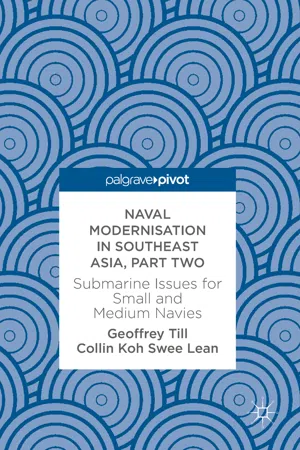- Sea Denial & Control. Most obviously, their stealth and expanding offensive power, and their emerging role in ASW operations, made submarines a key element in battles for sea control between equal fleets and very possibly for the sea denial operations of a weaker fleet against a stronger one. The sinking of the ROKS Cheonan apparently by a mini-submarine of the North Korean navy suggests that even such unorthodox craft as these may have significant sea-denial potential, at least in some circumstances. This is important since such outcomes would effectively determine the shape of the subsequent conflict at sea, or even its likelihood in the first place. Given the current level of interest in anti-access/area denial (A2/AD) operations in the congested and contested littoral, all this would seem of particular interest to the navies of East Asia and the Western Pacific.For such war-fighting functions, the air-independent propulsion (AIP) systems gradually arriving in the region appears to offer major tactical and operational advantage since they allow the need to surface in order to recharge batteries to be reduced from perhaps once every 3–4 days to once every 2–3 weeks depending on how the submarine is used. Whether AIP proves to be one of those technologies that change everything remains to be seen, as does the particular form it might take and the relative attractiveness of the alternate route of going for improved Lithium-ion batteries instead.
- (Nuclear) deterrence. For some navies, submarines could become the principal and safest agents for the delivery, attack and protection of a country’s nuclear deterrent capability. For the moment at least, this would seem only of direct interest to a few of the larger navies of the region, but indirectly it could affect many others. The dynamics of the wider South China sea, for example, would be changed, for instance, should the Chinese seek to use it as a ‘bastion’ for their nuclear propelled ballistic missile- firing submarines (SSBNs) operations. It would increase still further the strategic significance of the area and China’s sensitivity to US naval activity there perhaps to plot the bottom, and to seed sonar buoys and other such listening devices. Likewise, North Korea’s determination to build up a substantial sea-based deterrent capability as evidenced by its recent missile firings, development of the Gorae (Sinpo) class of conventionally powered ballistic missile-firing submarines (SSBs) and the building of two large concrete submarine pens close to the Mayang-do naval base, has major implications, especially for the navies of South Korea and Japan.Neither should the potential attractiveness of non-nuclear deterrent effect potentially delivered by submarines be forgotten. Vietnam’s Kilo submarines, for example, are being upgraded in order to operate the Klub missile system which can be used against land targets. In some situations, this capability could add significant strategic effect to the general level of deterrence provided...

Naval Modernisation in Southeast Asia, Part Two
Submarine Issues for Small and Medium Navies
- English
- ePUB (mobile friendly)
- Available on iOS & Android
Naval Modernisation in Southeast Asia, Part Two
Submarine Issues for Small and Medium Navies
About This Book
This edited volume starts with an account of the submarine in naval warfare and moves on to review the nature and consequences of naval modernisation in Southeast Asia by considering their acquisition by the small and medium navies of the region. It explores the reasons for these navies taking on this very substantial and demanding challenge, the problems they are facing and the consequences of the deployment of submarines for regional stability. Given the backdrop of growing tensions over the South China Sea and increasing competition between the United States and China in the region, will the arrival of submarines in the area help or hinder the cause of peace? This volume will be of substantial interest not just to those interested in submarines and naval development but also to students and teachers concerned about the very volatile developing situation in and around the South China Sea.
Frequently asked questions
Information
1. Submarines and Their Acquisition: A General Introduction
Table of contents
- Cover
- Frontmatter
- 1. Submarines and Their Acquisition: A General Introduction
- 2. Submarine Acquisition in Southeast Asia: The Dangers
- 3. Submarine Acquisition in Australia
- 4. Submarine Acquisition in Japan
- 5. Submarine Acquisition in Indonesia
- 6. Submarine Acquisition in Singapore
- 7. Submarine Acquisition in Malaysia
- 8. Submarine Acquisition in Vietnam
- 9. Conclusion
- Backmatter